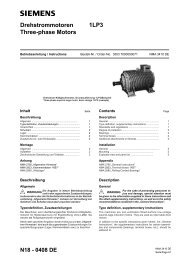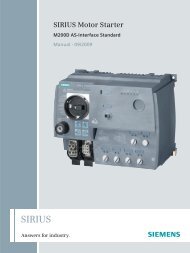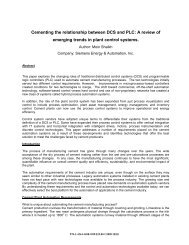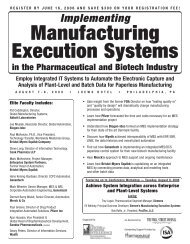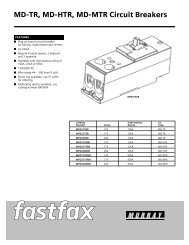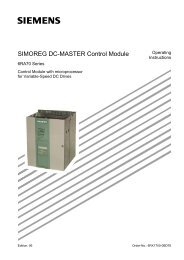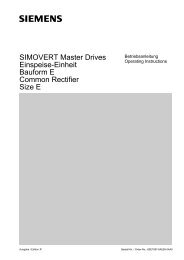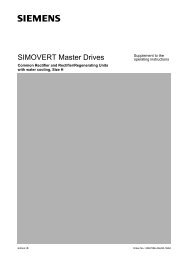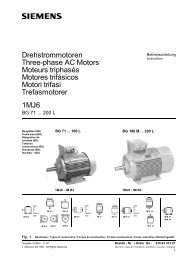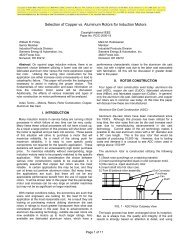WL Circuit Breakers - Siemens
WL Circuit Breakers - Siemens
WL Circuit Breakers - Siemens
You also want an ePaper? Increase the reach of your titles
YUMPU automatically turns print PDFs into web optimized ePapers that Google loves.
Overview of the Bus Systems<br />
<strong>WL</strong> <strong>Circuit</strong> Breaker<br />
Communication bus systems are used<br />
to connect distribution devices with<br />
varying levels of intelligence. With<br />
their different structures and<br />
mechanisms, certain bus systems<br />
are designed for highly specific<br />
applications, while others are better<br />
suited for more open applications.<br />
The following section describes bus<br />
systems used in automation and power<br />
distribution systems.<br />
Graphic<br />
1-1<br />
<strong>WL</strong> PROFIBUS/MODBUS Communication and Electronic Accessories<br />
PROFIBUS<br />
PROFIBUS-DP is an open, standardized,<br />
multi-vendor field bus system. Standardized<br />
to DIN (E) 19424 Part 3 / EN 50170, it<br />
is ideally suited to fulfill the stringent<br />
requirements for exchanging data in<br />
distributed peripheral and field devices.<br />
A PROFIBUS device can be easily integrated<br />
in and connected to standard automation<br />
systems. Many major manufacturers of<br />
programmable control systems offer<br />
PROFIBUS-DP master modules. The high<br />
transmission rates of up to 12 MBaud<br />
ensure virtually real-time system operation.<br />
The protocol used by the PROFIBUS-DP<br />
stations supports communication between<br />
the complex, equal-priority programmable<br />
Active Stations, master devices<br />
PROFIBUS<br />
M M<br />
<strong>WL</strong> <strong>Circuit</strong><br />
Breaker Sensor Actuator Actuator Sensor Actuator<br />
Passive Stations, slave devices<br />
Communication on the PROFIBUS: token passing between the masters; polling between the master and slave stations<br />
SECTION 1<br />
controllers (masters). Each station completes<br />
its communication task within a defined<br />
time frame.<br />
In addition, straightforward, cyclic and<br />
acyclic data exchange is carried out for<br />
communication between a master and<br />
the simple peripheral devices (slaves)<br />
assigned to it.<br />
PROFIBUS-DP achieves this using a bus<br />
access control mechanism comprising a<br />
central token passing procedure between<br />
the active stations (masters) and a central<br />
master-slave procedure for exchanging data<br />
between the active and passive stations.<br />
Bus access control enables the following<br />
system configurations to be implemented:<br />
V<br />
Meas.<br />
Value<br />
Transmit<br />
1/4




